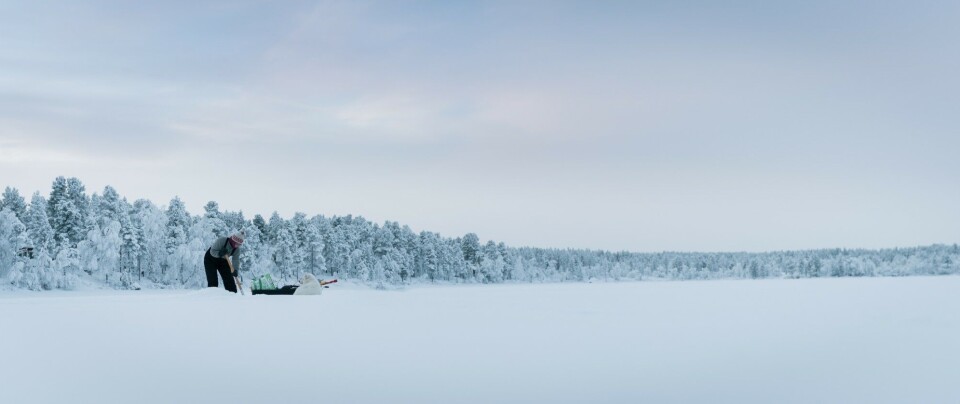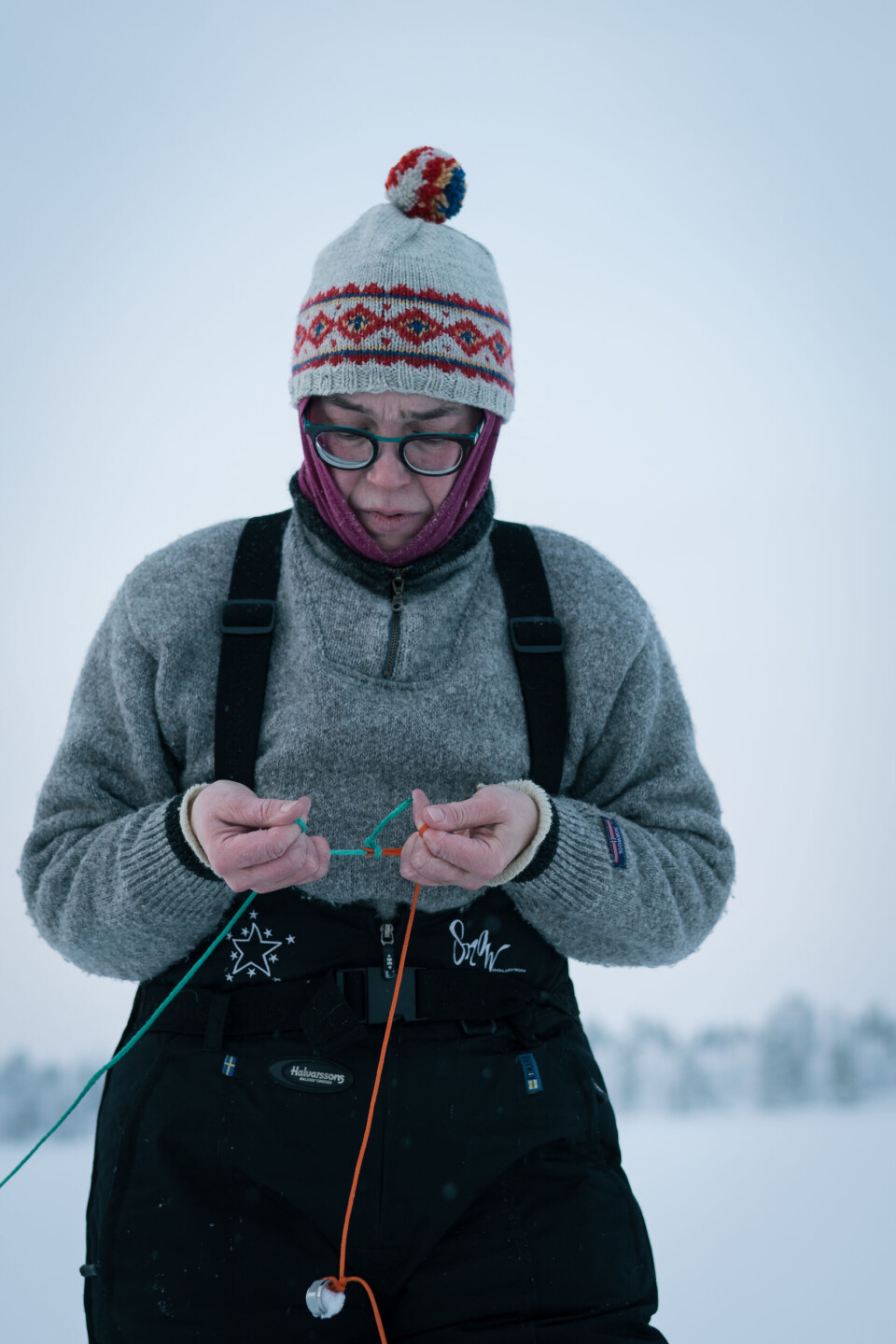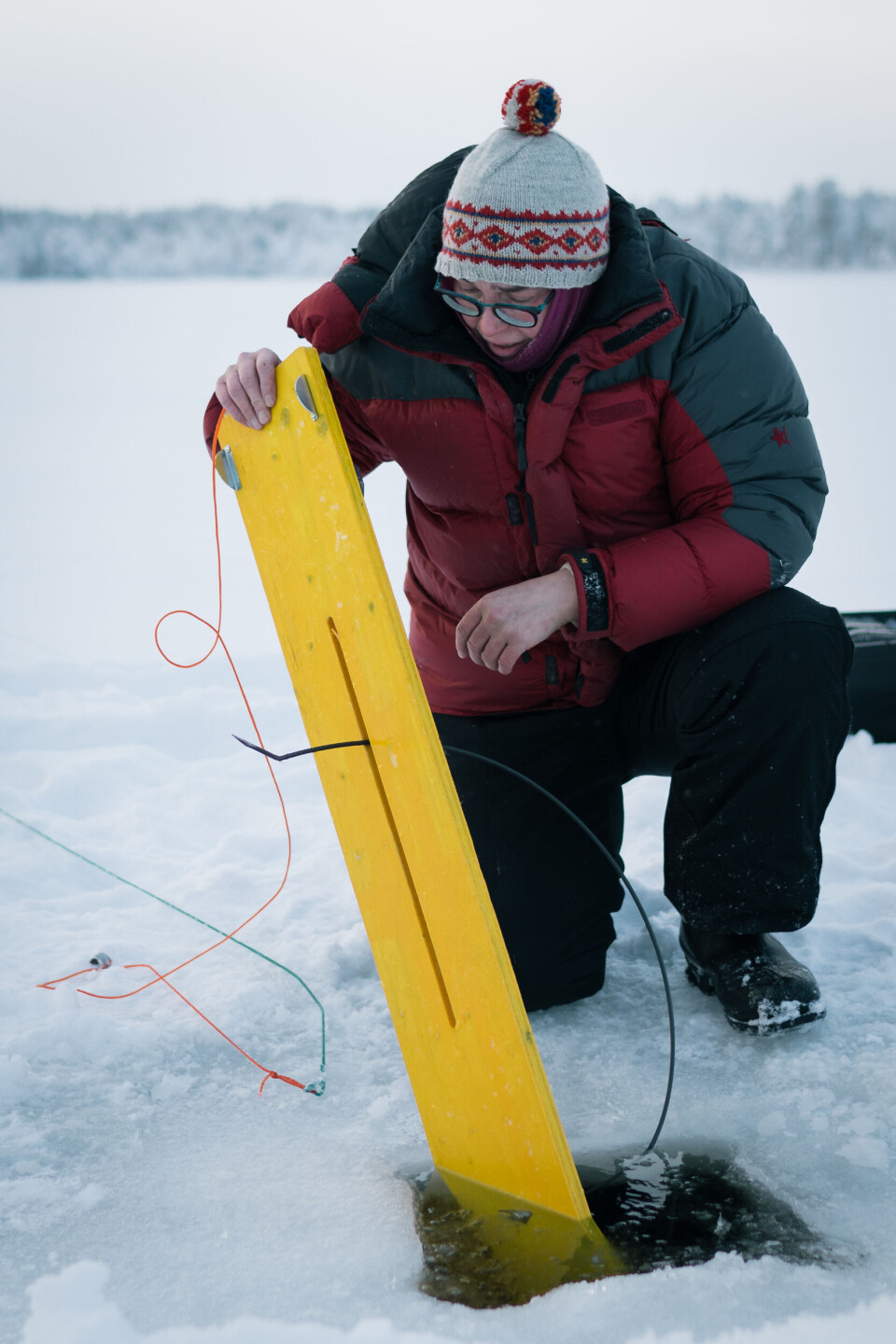
My lake. If you follow traditions, Nature will continue to feed you
On Lake Muddus, the world shines all white. The sky is separated from the ice only by a pine forest. It is late January. After the real cold spell of mid-January, the temperature keeps at –20 degrees Centigrade. The polar night is over, and the rays of a rising sun begin to color the sky.
p.p1 {margin: 0.0px 0.0px 0.0px 0.0px; line-height: 19.0px; font: 16.0px Arial; color: #000000; -webkit-text-stroke: #000000; background-color: #ffffff}span.s1 {font-kerning: none}
Text: Linnea Rasmus
Photography: Vesa Toppari
Layout and technical realization: Antti Hämäläinen & Henry Lämsä
Anna Morottaja drills holes in the ice and, sawing from one hole to another, makes a bigger hole. She is preparing to fish under the ice with a gill net. You need to do many things before you can pull a fishing net under the ice.

Morottaja attaches a long rope to a board that she pushes under the ice. With the ice jigger, or “otter” in the local language, she steers the rope into water, and then, using the rope, she pulls the fishing net under the ice.

When she pulls the rope, a spring in the jigger jabs into the ice, moving the board slightly forward.















